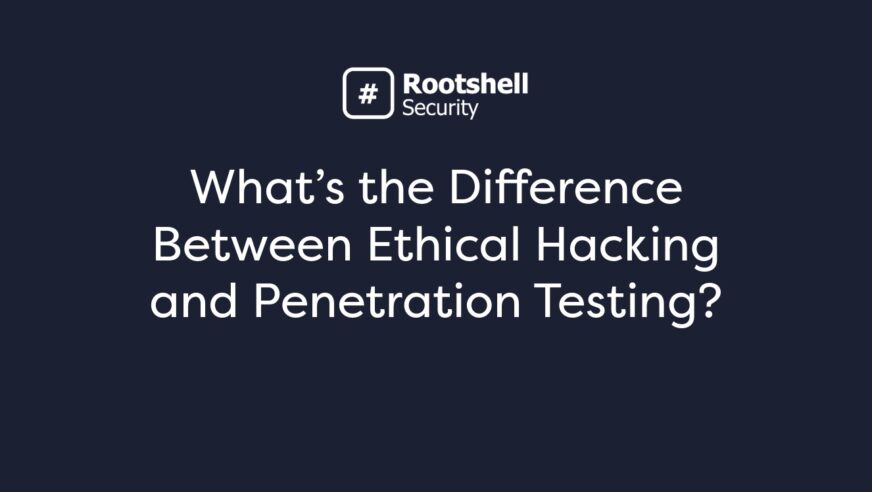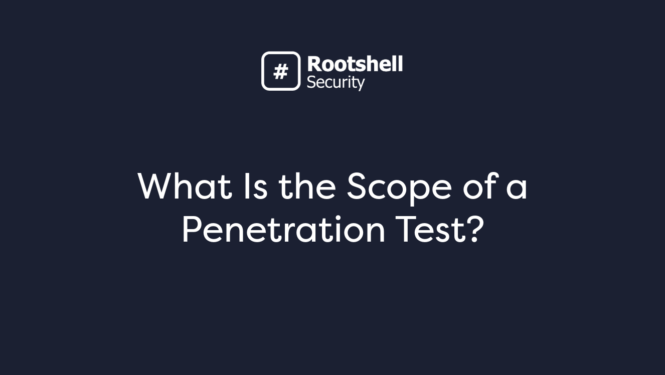Ethical hacking and penetration testing are two distinct methods for identifying and addressing security weaknesses in networks, systems, and applications. While they may appear interchangeable, they involve distinct approaches, objectives, and methodologies.
This guide explores the meaning, process, and scope of both practices. It also highlights the main differences between ethical hacking and penetration testing, so you can better decide which approach is going to be more useful to you in terms of security.
What is Penetration Testing?
Penetration testing, also known as a pen test, is a controlled attempt to exploit vulnerabilities in an IT system. The aim is to simulate real-world cyberattacks to evaluate how well a system withstands intrusion attempts.
Pen testers work with a clear objective and scope, often focusing on a specific application, network, or asset. These tests are typically scheduled as part of a wider risk assessment, compliance requirement, or post-deployment review.
Once testing is complete, the penetration tester compiles a report that includes an executive summary, details of the test scope, classifications of identified vulnerabilities, and recommendations for remediation. A risk score is often calculated by assessing the findings alongside the business value of the affected systems, helping to determine the potential impact of a cyberattack. The purpose of the report is to inform the client and relevant stakeholders of any security weaknesses and outline the steps needed to address them.
There are different types of penetration testing, including:
- Network penetration testing – focuses on servers, routers, switches, firewalls, and wireless networks.
- Web application testing – targets vulnerabilities in websites, portals, APIs, and databases.
- Social engineering tests – assess human susceptibility to phishing, pretexting, or physical access attempts.
- Physical penetration testing – evaluates physical security controls, such as access controls and surveillance systems.
A penetration test usually follows a defined methodology, such as the OSSTMM, NIST, or PTES frameworks. The process includes planning, reconnaissance, exploitation, post-exploitation, and reporting.
What is Ethical Hacking?
Ethical hacking is a broader practice that involves legally breaking into systems to discover vulnerabilities before malicious hackers can exploit them. It covers the full spectrum of attack vectors, from network and software vulnerabilities to social engineering, physical access, and configuration weaknesses.
An ethical hacker operates under formal agreement and has authorisation to probe systems using many of the same tools and techniques as criminal hackers. However, the goal is to detect security issues and recommend corrective measures.
Ethical hacking includes:
- Scanning for unpatched software or open ports
- Analysing firewall configurations
- Testing password policies and multi-factor authentication
- Identifying misconfigurations in cloud services or applications
- Probing mobile or IoT devices
- Conducting red team exercises
Pen testing is often seen as a one-time assessment, whereas ethical hacking is usually part of ongoing security auditing and threat-hunting efforts. Their methods and responsibilities extend far beyond those of a typical penetration tester, covering a wider range of tactics and security assessments.
Components of Penetration Testing
Penetration testing typically involves the following steps:
1. Scoping
The client and security team agree on the objectives, targets, testing windows, and rules of engagement.
2. Reconnaissance
Testers gather information about the target systems, using both passive and active methods. This may include domain lookups, open-source intelligence (OSINT), and port scanning.
3. Vulnerability Discovery
Automated tools and manual techniques are used to identify potential weaknesses, such as outdated software, misconfigurations, or exposed services.
4. Exploitation
Once a vulnerability is identified, the tester attempts to exploit it to gain access or escalate privileges. The aim is to demonstrate what an attacker could achieve.
5. Post-Exploitation
After initial access is gained, the tester explores how far they can move laterally within the system. This might involve accessing sensitive data or hijacking administrator accounts.
6. Reporting
A detailed report is created, including the vulnerabilities found, methods used, proof of concept, and remediation advice. This helps technical teams prioritise fixes.
Components of Ethical Hacking
Ethical hacking is more varied and less rigid than penetration testing. However, many engagements include the following activities:
1. Threat Modelling
Ethical hackers analyse an organisation’s assets, potential threat actors, and attack surfaces to identify where testing should focus.
2. Multi-Layer Testing
Instead of targeting a single system, ethical hackers assess security across networks, applications, devices, and user behaviour.
3. Use of Hacking Tools
Tools such as Metasploit, Burp Suite, Wireshark, and custom scripts are used to test defences in realistic conditions.
4. Social Engineering
Unlike pen tests, ethical hacking often includes phishing assessments or physical access attempts to test employee awareness.
5. Continuous Assessment
Rather than a one-off engagement, ethical hacking may be ongoing, forming part of bug bounty programmes or red and blue team operations.
- Documentation and Recommendations
Ethical hackers produce detailed documentation outlining their findings, methods, and security gaps. This can feed into wider risk management strategies.
Ethical Hacking vs Penetration Testing – The Differences
Feature | Ethical Hacking | Penetration Testing |
Scope | Broad; includes systems, people, and physical access | Narrow; focused on specific assets or systems |
Frequency | Often continuous or repeated | Usually conducted periodically |
Objective | Uncover vulnerabilities across all vectors | Simulate specific attack scenarios |
Methodology | Flexible; adapts to evolving threats | Follows defined standards (e.g. OSSTMM, PTES) |
Tools Used | Wide range, often tailored to the situation | Targeted to the scope and testing type |
Social Engineering | Commonly included | Not always included unless explicitly scoped |
Physical Security Testing | May be included | Rare, unless part of the agreed scope |
Team Type | Often internal or part of a red team | Often outsourced to third-party specialists |
Outcome | Broad recommendations for improving security posture | Specific list of exploited vulnerabilities |
How Do You Decide Which One You Need?
Choosing between ethical hacking and penetration testing depends on your organisation’s goals, risk exposure, and resources.
If you’re launching a new web application and need to verify its security before going live, a targeted penetration test might be appropriate. On the other hand, if you want to find hidden threats, test user awareness, and identify unknown weaknesses across all of your systems, ethical hacking provides wider coverage.
Some organisations use both. For example, ethical hacking might uncover risks through ongoing assessments, while pen testing is used for certification or compliance purposes.
Recent UK government data highlights the importance of these security measures. Just over four in ten businesses (43%) and three in ten charities (30%) reported experiencing a cybersecurity breach or attack in the past 12 months. That’s around 612,000 businesses and 61,000 charities. While this marks a decrease from 2024, when half of UK businesses were affected, the threat remains widespread and persistent.
Pros and Cons of Ethical Hacking vs Penetration Testing
To help you quickly compare the two approaches, here’s a breakdown of some of the pros and cons of ethical hacking and penetration testing. This comparison can support your decision-making process based on your organisation’s security needs and resources.
Feature | Ethical Hacking | Penetration Testing |
Pros | Provides coverage across systems, people, and physical assets Helps uncover emerging or unknown threats Simulates a range of real-world attack vectors Supports continuous improvement and threat hunting | Clearly defined scope and objectives Aligned with compliance and certification standards Repeatable and measurable using established frameworks Faster and more focused on specific systems |
Cons | May lack a defined scope Can be resource-intensive and time-consuming May not satisfy formal compliance requirements alone | Limited to the systems or assets included in scope Usually conducted as a one-off, point-in-time assessment May miss threats like social engineering |
Find the Right Security Testing Strategy with Rootshell Security
While ethical hacking and penetration testing both contribute to a stronger cybersecurity approach, they are not the same. Penetration testing is focused, formal, and limited to specific systems or applications. Ethical hacking incorporates a wider range of technical, human, and physical assessments. Understanding the difference between the two enables you to select the most effective strategy for identifying and addressing vulnerabilities.
Rootshell Security helps you select the most suitable approach for your goals. Our centralised platform also provides complete visibility over testing activity, results, and remediation progress, turning complex security data into clear, actionable insights.
Book a demo today to see how Rootshell can support your cybersecurity strategy.



